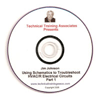ALBANY, N.Y. — The overall value of the global HVAC equipment market was at $91.3 billion in 2013, according to a report by Transparency Market Research. Rising at a positive compound annual growth rate (CAGR) of 6.2 percent between 2014 and 2022, the market is anticipated to reach $155.1 billion by the end of the forecast period.
The rising demand for energy-efficient systems, coupled with the rise in consumer confidence, has led to the increased uptake of HVAC equipment in recent years. Consumers and the commercial and construction markets have become more inclined towards technologically advanced products to replace their traditional counterparts.
Consequently, HVAC equipment suppliers are diversifying their product portfolios to cater to the demand for advanced system design and technology.
HVAC equipment is installed for heating and cooling residential, commercial, and industrial buildings.
These systems also provide fresh air to remove airborne contaminants such as odors emitted from furnishings and indoor cleaning chemicals and volatile organic compounds (VOCs). In the forthcoming years, HVAC equipment is likely to witness rising demand from both residential and commercial market segments due to significant climate variations.
Driven by the growing demand from the commercial sector, the rising expectation of consumers, climate variations, technological advancements, and the implementation of stringent government regulations, the demand for HVAC equipment is anticipated to soar over the report’s forecast period. The market will also witness rising opportunities in Asia-Pacific. On the flip side, the high amounts of energy consumed by HVAC equipment are a major challenge faced by the market. Nevertheless, the proliferation of green technologies, smart homes, and energy-efficient systems will give a significant boost to the market in the near future.
Based on type, the report classifies the global HVAC equipment market into heating and air conditioning equipment. By application, the global market for HVAC equipment is segmented into residential, commercial, and industrial. Of these, the commercial sector accounted for the largest share in the market, while the residential sector is anticipated to exhibit healthy growth over the forecast period. However, in the next few years, the industrial segment is likely to lose its share in the HVAC market. Additionally, the tourism and construction industries account for the majority of the demand generated in the commercial segment.
Based on geography, the report segments the global market into North America, Asia-Pacific, Europe, Latin America, and the Middle East and Africa. Of these, Asia-Pacific held more than 50 percent of the global market in 2013, thereby emerging as the largest regional market for HVAC equipment. The region is also anticipated to maintain its dominance in the global market over the report’s forecast period, particularly due to the robust economic growth in India and China. To date, China has been the largest producer of HVAC equipment in the world. Apart from catering to the high international demand, the country also addresses local demand for low-priced HVAC equipment.
The leading players in the global HVAC equipment market have been analyzed based on their company overview, financial structure, recent developments, product portfolio, and development status. Some of the companies profiled in the report include AB Electrolux, Carrier Corp., Daikin Industries Ltd., Haier Ltd., Lennox International Inc., LG Corp., Panasonic Corp., and Samsung Electronics.
For more information, visit Transparency Market Research
Publication date: 12/23/2016






